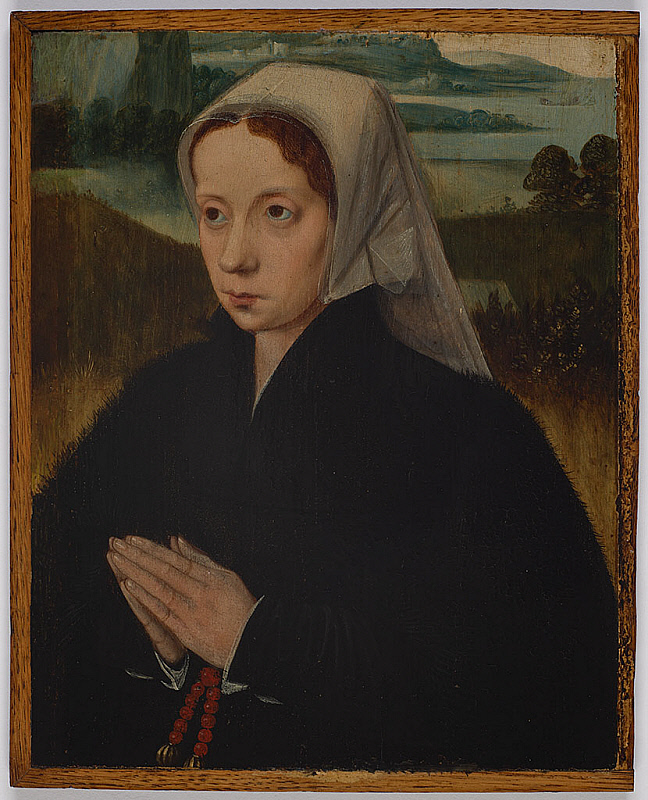Dutch
Portrait of a Female Donor, ca. 1540
Renaissance
Oil on wood panel
9 3/8 × 7 ½ in. (23.8 × 19.1 cm)
Painting
Gift of Baroness Tamara de Kuffner de Lempicka
1967-28 DJ
Learn More
By the 16th century, Dutch painters had perfected the technical means to produce lifelike images of prosperous patrons and the world around them, such as this portrait of a woman seated in prayer before a landscape. Though his identity is unknown, the author of this panel has deftly observed and recorded the figure’s intricately folded headdress, the textures of her hair and robe, and the gleaming surfaces of the red-and-silver prayer beads clasped between her hands. The woman’s leftward gaze indicates that this panel was once the right wing of a triptych (a painting in three parts). The subject’s husband would have occupied the left panel, with both figures turned toward a central panel depicting the Virgin Mary or another biblical scene. The subject’s position in the frame, and the odd way that the landscape is cut, further suggests that what remains is only a fragment of a larger original composition. Very popular among the prosperous merchant class of the Netherlands during the Renaissance, such donor (or votive) portraits were commissioned by wealthy individuals to memorialize themselves and solicit prayers after their deaths. The portraits also stood as records of the patrons’ economic and social standing. Although the identity of the sitter is no longer known, it may have been originally recorded by an inscription or coat of arms, now lost along with the panel’s original frame.
Related collections and exhibitions

